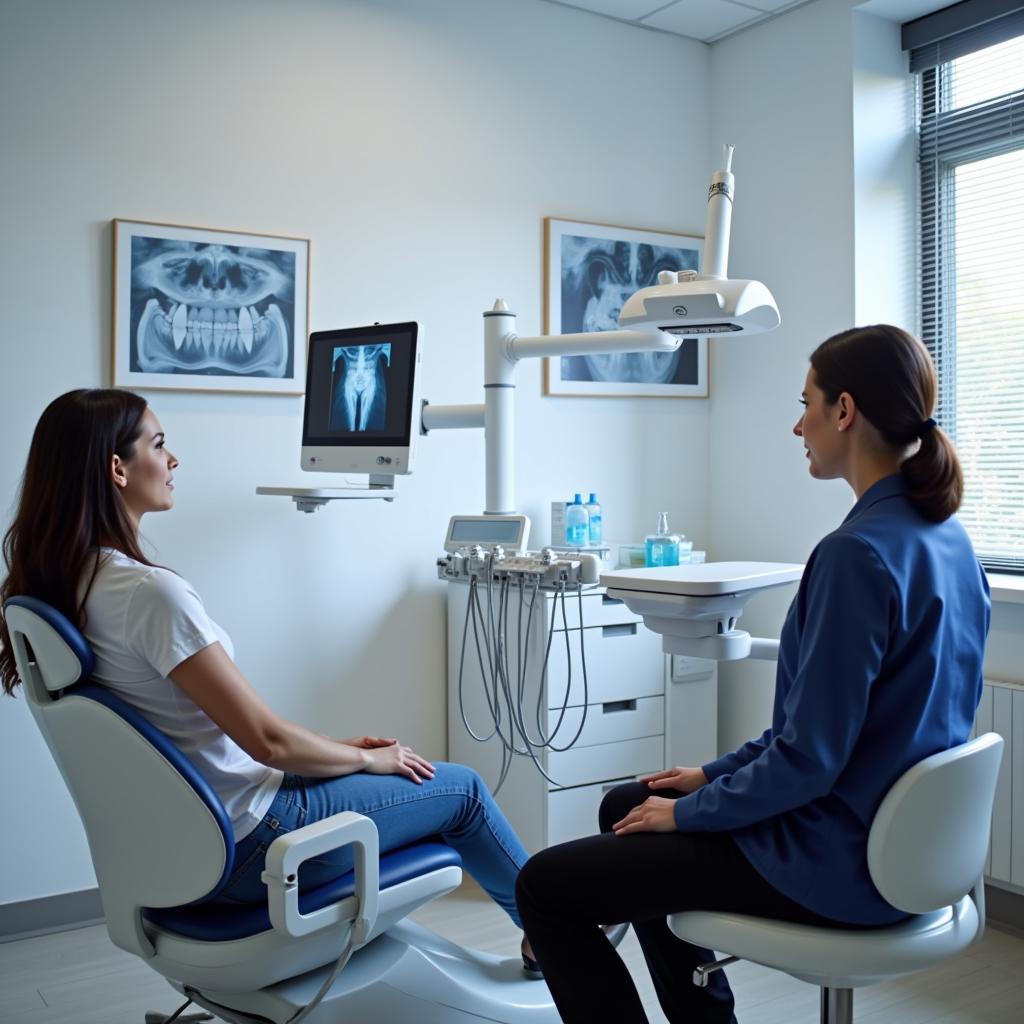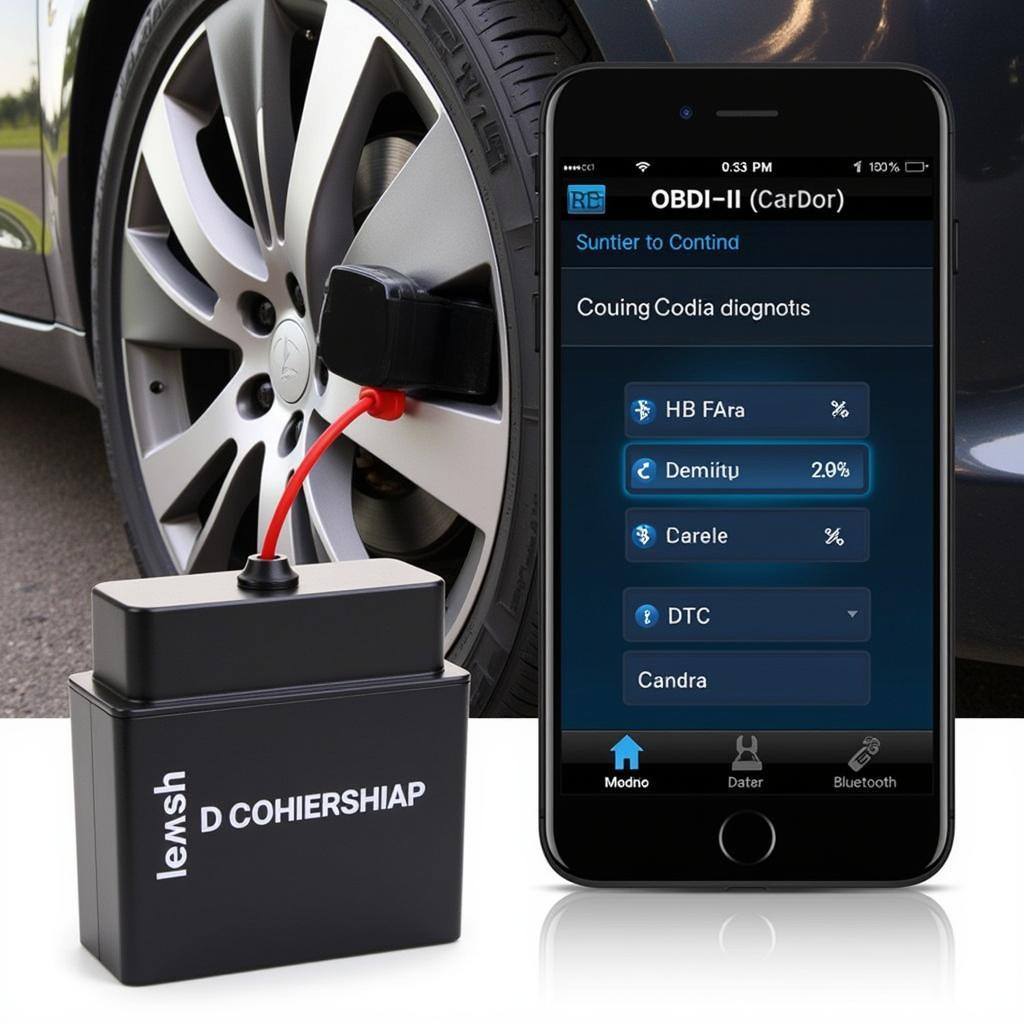Diagnostic Tools In Dentistry are revolutionizing how dentists diagnose and treat oral health issues. These tools provide more accurate and comprehensive information, enabling dentists to make better decisions and ultimately improve patient care. From digital radiography to advanced imaging techniques, these technologies are transforming the dental landscape.
Understanding the Importance of Diagnostic Tools in Dentistry
Accurate diagnosis is the cornerstone of effective treatment in any medical field, and dentistry is no exception. Diagnostic tools in dentistry play a crucial role in detecting problems early, identifying underlying causes, and planning appropriate treatment strategies. Early detection often leads to less invasive and more successful outcomes, saving patients time, money, and discomfort. These tools also empower dentists to educate patients about their oral health, fostering a collaborative approach to treatment.
What are the benefits of using dental diagnostic tools? They allow for early detection of diseases, more precise treatment planning, and enhanced patient education.
Types of Diagnostic Tools in Dentistry
There are a wide variety of diagnostic tools available to dentists today, ranging from traditional to cutting-edge technologies. Some of the most commonly used tools include:
- Digital Radiography: This technology uses digital sensors to capture X-ray images, providing higher quality images with reduced radiation exposure compared to traditional film X-rays.
- Intraoral Cameras: These small cameras allow dentists to visualize the inside of the mouth in real-time, projecting images onto a screen for both the dentist and patient to view. This enhanced visualization aids in diagnosis and patient education.
- Dental Lasers: Lasers are used for various diagnostic and treatment purposes, including detecting cavities, analyzing tissue health, and performing biopsies.
 Digital X-ray Machine in a Dental Clinic
Digital X-ray Machine in a Dental Clinic
How Diagnostic Tools Enhance Patient Care
Diagnostic tools are not just about advanced technology; they are about enhancing patient care in tangible ways. By providing more accurate and detailed information, these tools lead to:
- More Precise Diagnoses: Accurate diagnoses are crucial for effective treatment planning. Diagnostic tools eliminate guesswork and allow dentists to pinpoint the exact location and nature of a problem.
- Less Invasive Procedures: Early detection through diagnostic tools often means less invasive treatment options, reducing patient discomfort and recovery time.
- Improved Treatment Outcomes: By providing a clear understanding of the issue, diagnostic tools enable dentists to tailor treatment plans to individual patient needs, leading to more successful and long-lasting results.
Are diagnostic tools expensive? While the initial investment in some technologies can be significant, the long-term benefits in terms of improved patient care and outcomes often outweigh the costs.
The Future of Diagnostic Tools in Dentistry
The field of dental diagnostics is constantly evolving, with new technologies and techniques emerging regularly. Some promising advancements include:
- Artificial Intelligence (AI): AI is being integrated into diagnostic software to analyze images and identify patterns that may be missed by the human eye, leading to even earlier and more accurate diagnoses.
- 3D Printing: 3D printing is revolutionizing dental prosthetics and implant planning, allowing for more precise and customized solutions.
“Diagnostic tools are an investment in the future of dentistry,” says Dr. Emily Carter, DDS, a leading expert in dental technology. “These tools are not just enhancing our ability to diagnose and treat; they are transforming the patient experience.”
Conclusion: Embracing Advanced Diagnostics for Optimal Oral Health
Diagnostic tools in dentistry are essential for providing high-quality patient care. These tools enable dentists to detect problems early, make accurate diagnoses, and develop effective treatment plans. From digital radiography to emerging technologies like AI, these advancements are revolutionizing the dental landscape. By embracing these tools, dentists can improve patient outcomes and elevate the standard of oral healthcare. Contact ScanToolUS at +1 (641) 206-8880 or visit our office at 1615 S Laramie Ave, Cicero, IL 60804, USA for more information.
“The ability to visualize and diagnose with such precision is invaluable,” adds Dr. Michael Davis, DMD, a practicing dentist and advocate for integrating technology into dental practice. “It allows us to provide the best possible care for our patients.”
FAQ
- What is digital radiography?
- What are the benefits of intraoral cameras?
- How do dental lasers aid in diagnosis?
- Are dental diagnostic tools safe?
- What is the role of AI in dental diagnostics?
- How is 3D printing used in dentistry?
- What are the most common diagnostic tools used in dentistry?

